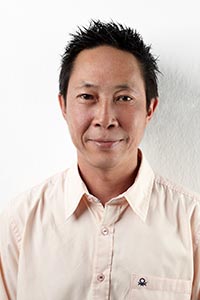
There is nothing wrong with Airports of Thailand executives having high ambitions for Suvarnabhumi airport. But it is a misplaced ideal if all of the basic problems at the airport are left untackled.
AoT acting president Pongsak Semson has unveiled a plan to take Suvarnabhumi to the top of the airport league by 2019.
That will be one big leap given that it was the sixth best Asian airport last year in the Airports Council International rankings.
Those ahead of the Bangkok airport all are familiar names, beginning with Singapore then moving on to Beijing, Hong Kong, Shanghai and Guangzhou.
The airport chief is confident Suvarnabhumi has a chance to dethrone those five airports if three problems are corrected. He wants to ensure staff at Suvarnabhumi have better English communication skills, find more ways to generate revenue and polish the managerial skills of officials _ tactics he believes will propel the airport forward and challenge its rivals.
The airport's woes on traffic congestion _ a key indicator _ are not a point of concern as this issue will become a non-issue four years from now when Suvarnabhumi's second phase is completed.
By that time it should be easily able to handle 60 million passengers either coming to Thailand or using the airport as a transit point to other countries.
Suvarnabhumi's capacity to handle 45 million passengers was quickly reached and it is now overloaded under the weight of Thailand's popularity among tourists.
The airport agency has been forced to reopen Don Mueang airport for regular flights for low-cost airlines to relieve the burden at Suvarnabhumi.
AoT projects that the number of passengers using Suvarnabhumi will rise to 53 million next year and cross the 60 million mark in 2019. Given its location in the heart of mainland Southeast Asia, the airport is undoubtedly a main hub of commercial flights for the region.
It could climb the rankings ladder as airport executives hope, but today it is still just a big airport which is not user-friendly.
None of the old problems at Suvarnabhumi have been resolved. AoT has installed more toilets after complaints from travellers when the airport opened seven years ago that they were hard to find. The situation is better today, but the cleanliness of the toilets has not been achieved.
Many emergency exits inside the terminal are still blocked by shops even though many were ordered to clear the space to make room for easier access. The problem derived from poor floor planning in the first place when AoT tried to make Suvarnabhumi a shopping paradise for air travellers at the expense of other things, including pleasant, decent areas to rest or wait for embarking passengers.
Shopping is offered by all airports, but it is not the only thing travellers want to do while spending time there.
Suvarnabhumi seems not to want to encourage visitors to use public transport to head into Bangkok. Signs leading them to public buses and the train are hard to see in comparison to those that point to the highly expensive airport limousines.
The airport leaves an impression with travellers, especially first-time users, that it prefers them not to use public transport and is happy to see them pay more for taxis.
The Airport Rail Link is struggling to connect to public buses at Makkasan station which was built with a view to being a downtown check-in for airlines such as the ones in Hong Kong and Kuala Lumpur. It is struggling to convince travellers to use it. But the few travellers who do use it know that it is not AoT's fault and that the station is run by the State Railway of Thailand.
These things make Suvarnabhumi inferior to other big airports such as Changi, Hong Kong International Airport, Incheon and Narita, which have signs to offer a choice of all transport modes for travellers _ from buses to trains to taxis.
Passengers care less about airport rankings and more about aids to get them out of the airport instead of forcing them to waste time while searching for their choice of transport.
Unfortunately, Suvarnabhumi, like other airports serving capital cities, is the first thing newcomers see. It could leave them with a good or bad impression.
And that is the factor deciding which airport is better than another.
Improving the basic things will surely lift the profile of Suvarnabhumi, regardless of where it stays in the rankings.
Saritdet Marukatat is digital media news editor, Bangkok Post.
